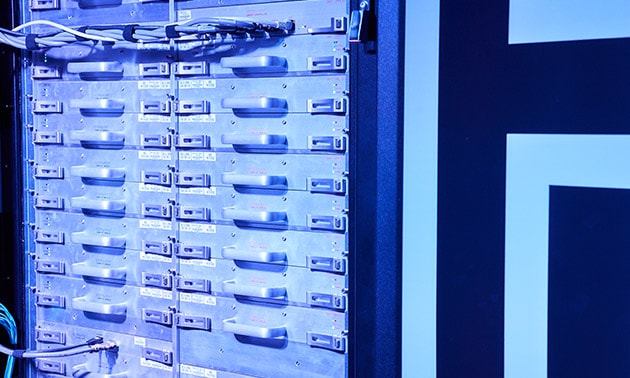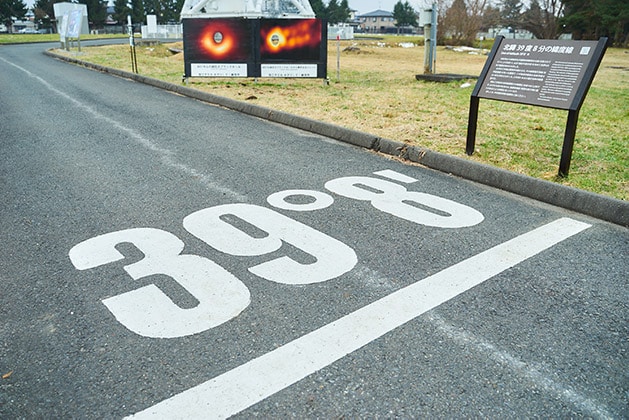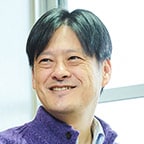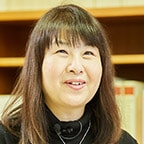
- Semiconductor Technology Now
Cross Talk
The appeal of sciences and the source of Professor Honma’s intellectual curiosity
 |
Mie Nagata: Professor Honma, you have spoken about many different things. But could you also tell us the source of your intellectual curiosity and inquisitive mind?
Mareki Honma: I just love it, that’s all. Ever since I was a boy, I would look at the stars in the sky and always wonder what worlds were waiting there.
I also love new mysteries arising one after the other. I don’t expect mysteries will ever cease in the fields of science, and I hope to continue finding the answers to them. I will never stop feeling that way.
The black hole shadow we just captured, for example. From Einstein’s theory of general relativity, we could predict what a black hole would look like, so we started by using supercomputers to simulate black holes. The actual image we captured ended up being very similar to the results of those simulations. We were happy for that to happen, and it was also great that we were able to confirm the truth of Einstein’s theory.
However, we were also disappointed. You see, reality being exactly the same as theory just resulted in a happy ending to the problem. But what many physicists were hoping for was an unexpected result that could be interpreted as proving that Einstein’s theory of general relativity was wrong. In other words, an unexpected result might have been better because it could have led to new directions for research.
Mie Nagata: What do such scientific mysteries, and the pursuit of answers to them, offer mankind?
Mareki Honma: As shown by such things as mobile phones, the fact is that science enriches the world and improves convenience. However, it is more difficult to say the same about our own field of astronomy. If I were asked what the benefit of researching black holes was, I could only respond that it offers no benefits. [laughs]
Although I believe that astronomy is valuable in that it makes us aware of things that we are not normally aware of. We could live sufficiently if we were only aware of the Earth, but finding answers to questions about things outside the Earth, about black holes, and about galaxies, stimulates mankind’s intellectual curiosity and gives us the ability to answer the fundamental question of who we are.
Mie Nagata: It’s truly a field of research that answers, and thinks further on the questions of where we have come from and where we are going.
Mareki Honma: Yes. Actually, when I was asked what the benefit of researching black holes was, I answered (only half jokingly) that it enables us to stand before extra-terrestrials, if we meet any, without fear of embarrassment. [laughs] If we ever met extra-terrestrials, while still knowing nothing about black holes, they would surely laugh at our poor level of knowledge.
I hope that our research is able to advance the level of human understanding in some small way. But more than that, I hope that we can help mankind go and visit extra-terrestrials in their worlds, solve the various problems those beings are facing, and maybe even save them.
 |
“A single focus” the key to realizing dreams
Telescope Magazine: What is your final message to young people who aim to follow the path of science?
Mareki Honma: I think they should be interested and curious about something, anything, whether that be the universe or not. If they are ready to act in relation to their area of interest, and are committed to drilling down into that subject in the hope of doing something, then that will become the driving force for achieving things. They should start by finding something they love, and then treasure it.
Even though there are not that many jobs and positions, or posts, for astronomers, the most important thing to survive in this business was to have a single focus, an unconditional desire to continue doing what we were doing.
Mie Nagata: That was how it was for me. I was always telling people I wanted to do work related to space, so my school teachers helped me and I found an opening as a lecturer at a planetarium, and fate came together to open the path before me. Now, it seems to me that lecturing at a planetarium is my mission, one that I would follow no matter how many times I was reborn.
Mareki Honma: Yes, that is the sort of single focus that I want young people to have.
Telescope Magazine: Thank you for your time.
 |
 |
Profile

Mareki Honma
Director, Mizusawa VLBI Observatory, National Astronomical Observatory of Japan (NAOJ)
Professor, National Astronomical Observatory of Japan
Professor, Graduate University for Advanced Studies
Professor, Graduate School, The University of Tokyo
Born in Texas, U.S.A., Mareki Honma was raised in Kanagawa Prefecture, Japan. He graduated from the Department of Astronomy, the University of Tokyo in 1994, and completed his doctoral course at the Graduate School of the same university in 1999. Also in 1999, he became COE Researcher at the National Astronomical Observatory of Japan (NAOJ).
After working as assistant and then associate professor, Honma has held his current position since 2015. His area of expertise is radio astronomy, and his main areas of research are galactic structures and black holes using very long baseline interferometers (VLBI). He has authored a number of publications including Kyodai Burakku Horu no Nazo [The Mystery of Supermassive Black Holes], Kodansha Blue Backs series, and Kokuritsu Tenmondai Kyoju ga Oshieru Burakku Horu-tte Sugoi Yatsu [The Wonders of Black Holes as Taught by a Professor of the National Astronomical Observatory of Japan], Fuso Publishing. Since 2017, he has appeared on the NHK Radio program Kodomo Kagaku Denwa Sodan [Science Hotline for Children] to answer questions.

Mie Nagata
Astronomy presenter, Natsuyasumi Kodomo Kagaku Denwa Sodan [Science Hotline for Children: Summer Edition], NHK Radio
Mie Nagata writes a column for the Tokyo Shimbun newspaper called Hoshi no Monogatari [The Story of Stars]. Her main publications include Seiza no Mitsukekata to Shinwa ga Wakaru Hoshizora Zukan [Finding Constellations and Understanding Myths: An Illustrated Encyclopedia of Stars in the Sky], Seibido Shuppan; Tokimeku Hoshizora Zukan [An Exciting Illustrated Encyclopedia of the Stars in the Sky], Yama-kei Publishers; Hoshi to Uchu no Fushigi 109 [109 Mysteries of the Stars and Space], Kaisei-Sha; Hajimeyo Hoshizora Kansatsu [Observations of Stars in the Sky for Beginners], NHK Publishing; and Sora Garu Baiburu [Girl’s Bible of the Sky], Futabasha Publishers. She has also written about stars in the sky for a series of postage stamps showing constellations.
She has an asteroid named after her: 11528 Mie.
Every day, she is busy explaining the wonders of the universe and earth.
Writer
Shinya Torishima
Space development commentator<>
Member of Space Authors Club
Shinya Torishima conducts interviews and writes news articles and discussion papers on Japanese and international space development. He has also made many appearances in newspapers, television and radio to talk about various topics. His main publications include his co-authored Elon Musk, Yosensha, and articles for academic journals.
Writer’s website: http://kosmograd.info/
Twitter: @Kosmograd_Info



















